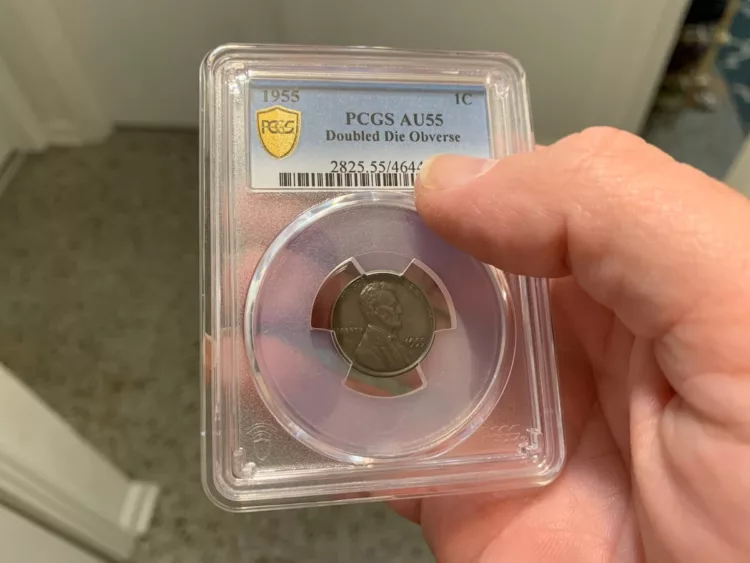Collecting coins is not just a pastime; it’s a form of art that allows enthusiasts to explore the past, cultural heritage, and the detailed designs of currency. For many, the joy lies in the search for unique U.S. coins that tell a unique story and carry significant value. As the numismatics world continues to evolve, the need to uncover these buried gems has enchanted collectors of every generation.
Identifying rare U.S. coins requires a discerning eye and a bit of expertise about what makes individual items less common than others. Criteria such as mint marks, variation in design, and historical background all play a important role in establishing a coin's rarity. If you’re a veteran collector or just starting out, grasping how to recognize these valuable coins can enrich your collecting experience and potentially lead you to a treasured item.
Understanding Coin Grading
Coin grading is a crucial method in the realm of numismatics that assists collectors ascertain the quality and value of rare U.S. coins. Grading typically considers elements such as the coin's state, luster, and the presence of any wear or damage. Grasping how coins are graded is important for collectors, as it significantly impacts the overall appeal and market price of the coins in their collections.
There are multiple grading systems employed, but the most recognized is the Sheldon Scale, which spans from one to seventy. A grade of one signifies a heavily worn coin with little remaining detail, while a grade of seventy indicates a coin that is virtually perfect. Knowing the grades can aid collectors identify potential rare coins and ensure they are making informed purchases. Coins graded higher on this scale are often more unusual and more valuable than their lower-tier counterparts.
When inspecting coins, collectors should acquaint with the terminology and criteria employed in grading. This includes terms like "uncirculated," "brilliant uncirculated," and "proof." Additionally, gaining knowledge to recognize the characteristics of diverse coin types and comprehending how grading can influence their rarity can significantly enhance a collector's ability to recognize valuable coins.
Ultimate Rare U.S. Coins to Seek Out
When it comes to uncommon U.S. coins, the 1909-S V.D.B. Lincoln penny stands out as a critical for collectors. This coin is notable for its low mintage, with only about 480,000 struck. The "S" indicates it was minted in the SF Mint, and the inclusion of V.D.B., the initials of designer Brenner, on the reverse makes it even more sought after. ngc certified coins to its cultural significance and limited availability, this penny can fetch many thousands of dollars in pristine condition.
Another coin to keep an observant eye on is the Thirteen Liberty Head nickel. Only 5 of these coins are known to exist, making it one of the rarest coins in American numismatics. Its rarity stems from the fact that it was produced after the U.S. Mint had transitioned to the Buffalo nickel design. This exceptional piece of history is often regarded as a holy grail for collectors, with records of sales reaching multi-million dollar of dollars.
Lastly, the 1794 Flowing Hair silver dollar is celebrated as one of the first silver coins minted by the U.S. government. Experts believe that only around 1,800 were made, and its design features a graceful Liberty figure. The combination of age, limited mintage, and historical importance places this coin in great demand among collectors, often commanding prices in the hundreds of thousands. Finding any of these rare U.S. coins can significantly augment a collection while providing a insight into America's numismatic heritage.
Tips for Acquiring and Buying Valuable Coins
When looking for valuable U.S. currency, it’s important to enlighten yourself about the specific types of currency you are interested in. Investigate the historical context setting, minting information, and market prices of multiple currency. Tools such as books, online resources, and coin fairs can provide valuable insights. Engaging with the coin collecting community, whether through online groups or local societies, can also boost your understanding and help you associate with experienced collectors.
Once you have a good comprehension of the uncommon coins you want, start visiting coin exhibitions and auctions. These occasions often showcase valuable U.S. currency that are hard to locate elsewhere. Keep attention to the credibility of the vendors and auction firms and confirm they are reliable. Building rapport with trustworthy vendors can result to better opportunities for obtaining valuable coins, as they may alert you of upcoming arrivals or private sales.
Before making a buy, always verify the legitimacy of the uncommon currency. Use well-known grading services to assess the condition and price of the coin. If possible, request for proofs of validity or papers that establish the coin's lineage. This attention will help you prevent counterfeit currency and ensure that your spending is sound. Remember that calmness is key in coin numismatics; valuable discoveries may take time to unearth.

